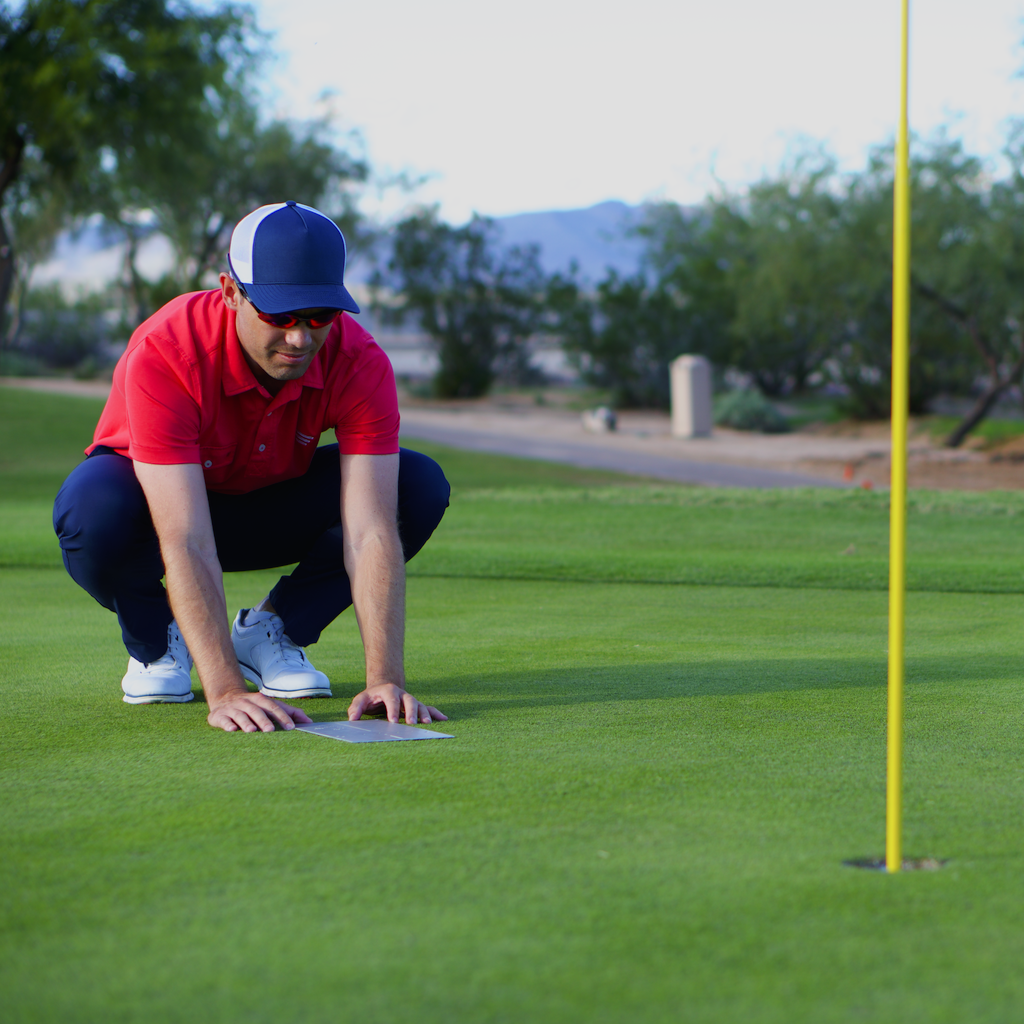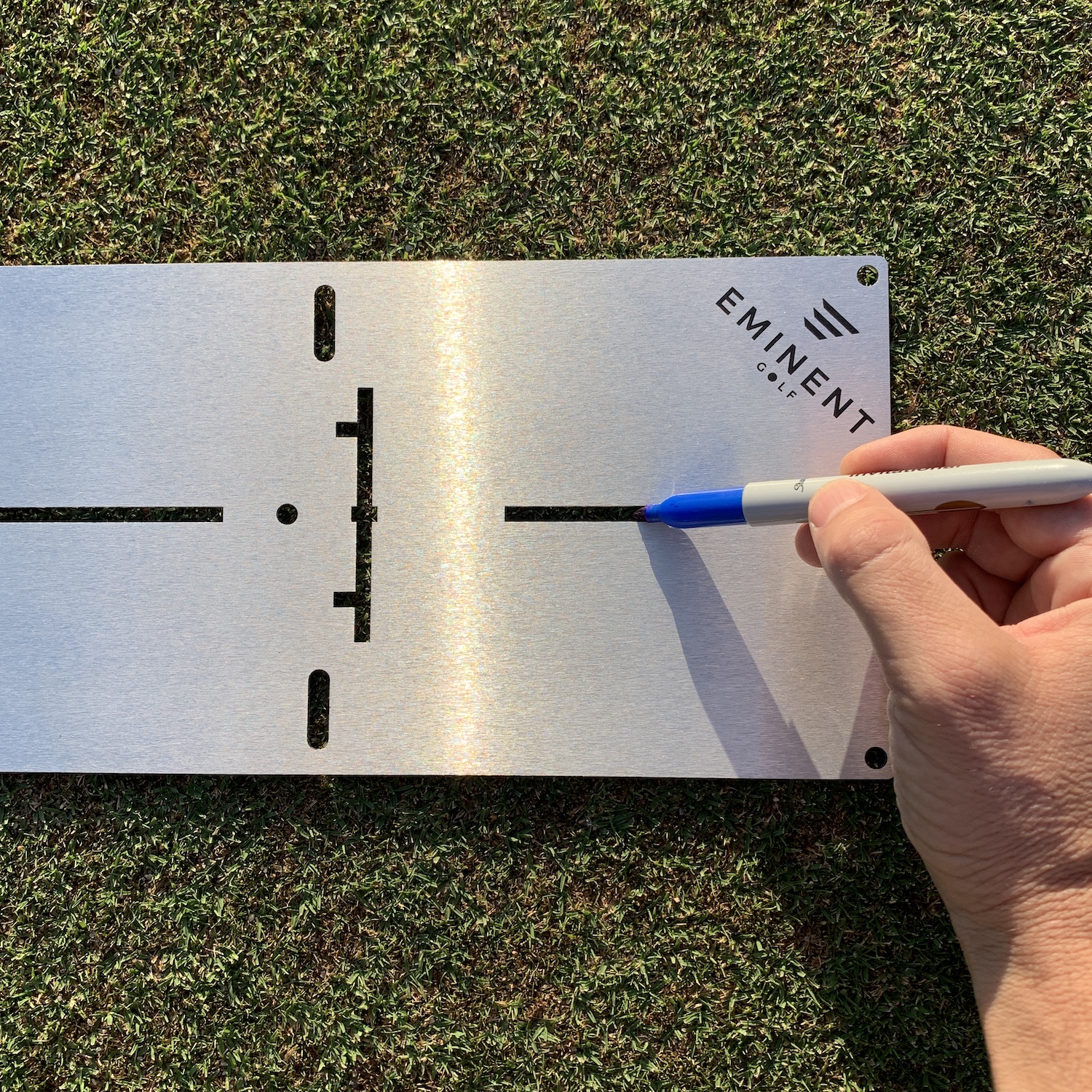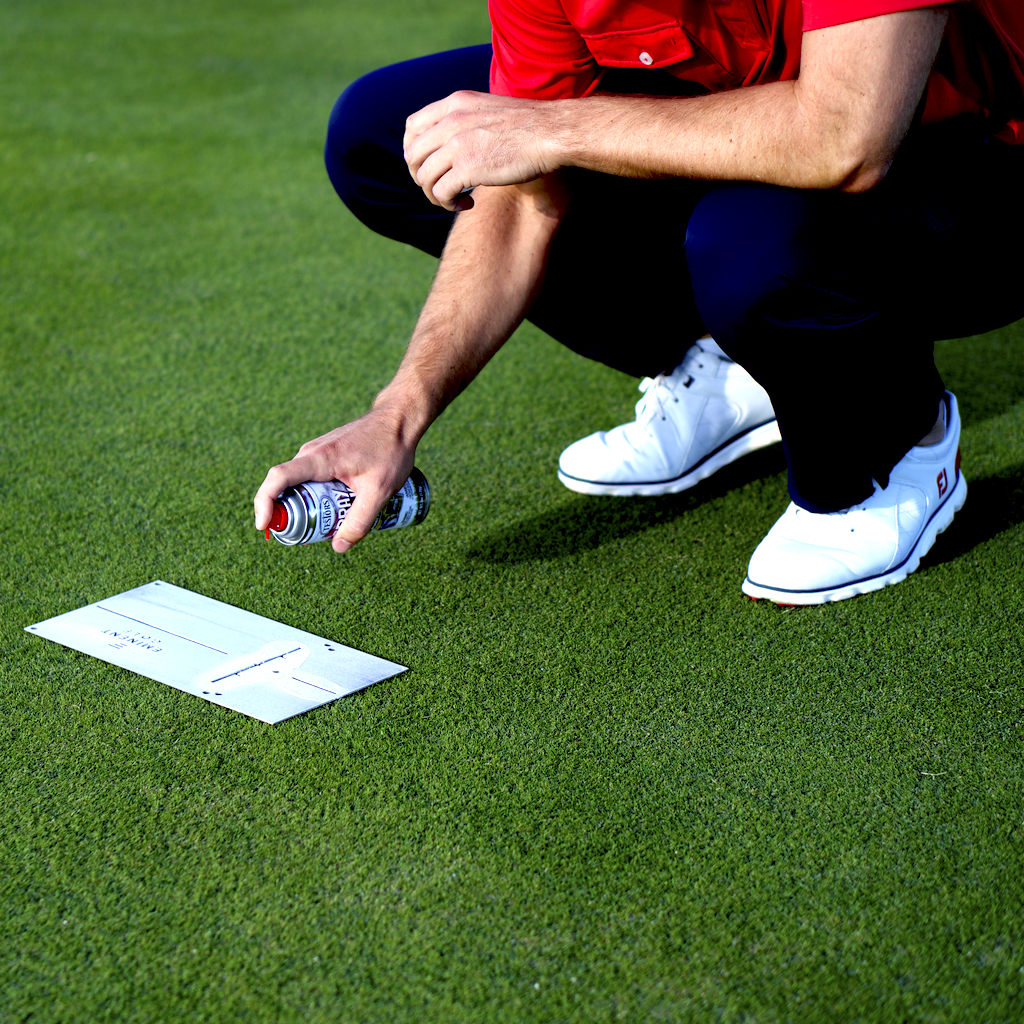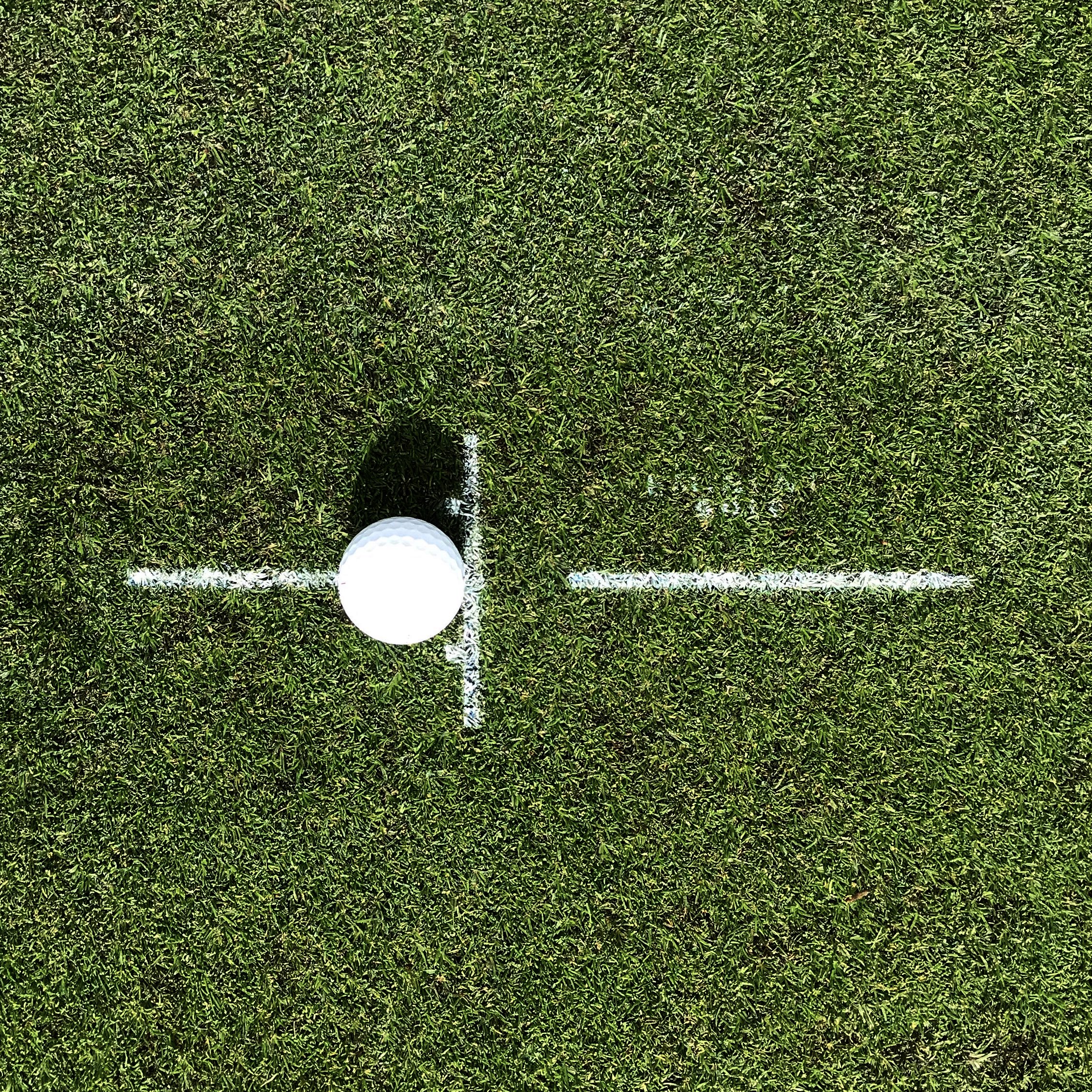Putting Tips for Superior Aim on the Greens
In order to putt well, you have to master green reading, aim, speed control and your mechanics. Today we are going to talk about aim. If you want to make more putts you have to improve your aim.
Being great at reading greens won’t do you much good if you can’t properly aim the putter face. The ball needs to start out on the right line to give yourself a chance at getting the ball into the hole.
If you continue to align yourself incorrectly, you will wreak havoc on other parts of your putting game. The brains natural ability to react and compensate is something we all have to be careful of. Without realizing this, you will develop bad habits that will be tough to break. In order to avoid bad habits, let me provide you with some drills to properly aim the putter head.
Knowing your putter head is aimed and aligned correctly is one part of the puzzle. To me, it’s the most important part! Once that is in order, we can align our body to the putter and then focus on our head and eye position. Some would argue that this order is backwards. That eye position is most important in order to read the line accurately.
Today, I will not get into the specifics of eye position, eye dominance, and visual perception. I will cover that in greater detail in the future. What’s important to understand is how we are trained to aim throughout our life. Think about all of the other sports you have played. See a pattern? We are typically in a standing position, facing the target, with a natural binocular vision. We are not alongside of the object with our eyes facing the ground. That’s when our vision starts getting skewed.
Ever wonder why tour professionals spend so much time behind the ball? Next time you watch them on TV, take a good look at their pre-shot routine. It’s imperative to pick your target prior to addressing the ball. I don’t care if you are a linear or nonlinear putter. Always pick your spot/line from behind the ball.
TRUST it and then address the ball. You will quickly realize that what you see from behind the ball is not always what you see when your eyes are over the ball. That’s when the mind game comes into play and people start missing putts. If you don’t trust the aim point you select while standing behind the ball, you are in deep trouble.


Alignment Drill
Your training will take place on the practice putting green. I highly recommend purchasing our stencil alignment plate. It’s cheap, durable and works wonders! You can purchase it HERE.
Start by aiming your alignment plate to your intended target. Place a ball on top and verify that your aim line is accurate. I recommend hitting 3-7 putts. If you have dialed in your speed, the putts will all go in. Now use the stencil design to trace your aim lines. Once that is complete, remove the plate. Repeat this 3 more times around the hole. Try to select a straight uphill putt, straight downhill putt, a right to left put and a left to right putt.



Now that you have marked your aim lines, you can now set up to the ball with confidence. Practice as if you were on the golf course. Prior to each putt, stand behind the ball, confirm your aim point and then address the ball. As you make your way around the hole, pay close attention to what your eyes are telling you while they are over the ball. Is the feedback consistent around the hole? For example, do you always feel that you are aimed left of your target when your eyes are over the ball? Or does that change depending on the type of break?
Without diving too deep, I will briefly discuss eye position. If your eyes are too far inside the ball, your perception of the target will shift to the right. If your eyes are outside of the ball, you tend to perceive your target as being farther left than it really is. Make sure you consistently address the ball the same way and place your eyes in the same position. I recommend placing your eyes slightly inside the ball. This enables you to make a natural arcing stroke.
It’s okay to see a different line when you stand over the ball. What’s important is to trust your initial aim and stick to it. Get comfortable knowing that you see a slightly different line over the ball. Once you master this, you will have a much more confident stroke. Overtime, this practice routine will enable you to see a similiar line no matter where you stand. Don’t just take my word for it, get out there an practice!
